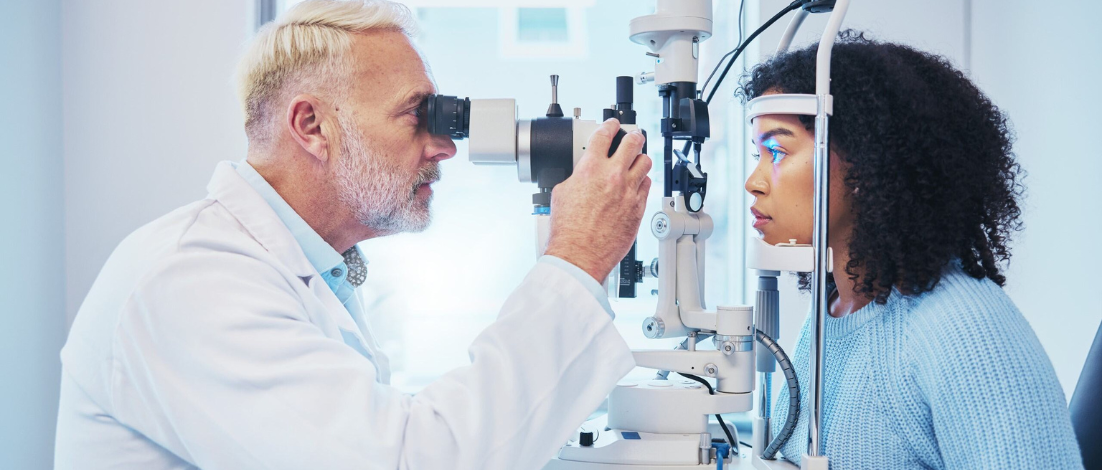The Importance of Accurate Vision Medical Documentation
For veterans, vision provides a cornerstone of independence, safety, and quality of life. Service-related vision conditions may result from injury, chemical exposures, environmental hazards, or secondary complications from other medical conditions like traumatic brain injuries. Educating yourself about precisely what medical evidence the Department of Veterans Affairs (VA) requires enhances your ability to document your vision condition accurately and thoroughly. Medical evidence serves as the factual foundation for your long-term vision evaluations.
This educational resource details crucial aspects of medical documentation, ensuring you have accurate and comprehensive vision records. Remember, you decide how to use your medical documentation, and you alone control how you pursue these decisions with the VA.
Common Vision Conditions Seen in Veterans
The VA evaluates vision conditions using diagnostic codes in 38 CFR Part 4 Subpart B – The Organs of Special Sense. Common vision conditions evaluated include:
- Uncorrectable Refractive Errors: Keratoconus, severe astigmatism, or corneal conditions documented with specialized tests.
- Eye Diseases: Glaucoma, cataracts, diabetic retinopathy, macular degeneration, documented with imaging and functional assessments.
- Eye Injuries: Trauma including retinal detachment, chemical exposure, documented structural damage.
- Eye Muscle Issues: Diplopia (double vision), strabismus, muscle coordination issues documented extensively.
- Blindness and Visual Impairments: Documented by visual acuity and visual field testing.
Strong medical documentation. Clear evidence.
Connect with our licensed specialists today.
Veteran Affairs Schedule for Rating Disabilities (VASRD)
The VA primarily evaluates vision conditions based on objective measurements and functional impairment documented in your medical records. Crucial documentation includes:
1. Visual Acuity: Measuring Clarity of Vision
Visual acuity testing (Snellen chart or LogMAR equivalent; these are the traditional charts with row of letters) measures your best-corrected vision (with glasses or contacts).
Strong Documentation Example:
Right Eye: 20/100 Distance corrected, 20/80 Near corrected Left Eye: 20/40 Distance corrected, 20/40 Near corrected
Documentation example: “Patient has progressive deterioration from 20/50 six months ago to current 20/100 despite corrective lenses.”
2. Visual Field: Testing Peripheral Vision
Document peripheral and central field loss using standardized automated perimetry (Humphrey Visual Field).
Strong Documentation Example:
Right Eye: Inferior arcuate scotoma with mean deviation -14.3 dB (severe loss) “Visual field defect impacts patient’s night-time driving and peripheral awareness.”
3. Eye Muscle Function: Documenting Diplopia or Muscle Coordination Issues
Record specific measurements of muscle dysfunction and double vision using established methodologies.
Strong Documentation Example:
“Diplopia present at 20 degrees lateral gaze in both eyes, requiring compensation by turning head rather than moving eyes.”
4. Structural Eye Conditions and Injuries
Clearly document structural eye damage through thorough ophthalmology assessments.
Strong Documentation Example:
“Corneal chemical burn resulting in corneal scarring; visual acuity remains 20/200 despite surgery.”

Essential Medical Evidence Checklist
- Detailed diagnosis with ICD-10 code
- Standardized visual acuity tests (Snellen or LogMAR) results documented
- Visual field test results (Humphrey or Goldmann perimetry)
- OCT imaging or fluorescein angiography reports if applicable
- Intraocular pressure documentation (for glaucoma)
- Ophthalmologist or optometrist reports including progression over time
- Documentation of functional limitations affecting daily activities
- Assistive devices required clearly documented
Visual Acuity Reference Chart
Use this table to better understand documented visual acuity measurements:
| Snellen Acuity | LogMAR | Description |
| 20/20 | 0.0 | Normal vision |
| 20/40 | 0.3 | Minor impairment, driving minimum |
| 20/70 | 0.54 | Moderate low vision |
| 20/100 | 0.7 | Noticeable vision loss |
| 20/200 | 1.0 | Legal blindness threshold |
Source: VA.gov
Questions to Ask Your Eye Provider
At your next appointment, consider asking:
- “Could you document my best-corrected visual acuity separately for each eye?”
- “Could you clearly note how my condition impacts daily tasks like driving or reading small print?”
- “Please include recent imaging like OCT that shows structural eye changes.”

Secondary Conditions Related to Vision Issues
Secondary vision issues can result from conditions such as diabetes or traumatic brain injury (TBI). Properly documenting these connections is critically important.
- Diabetic Retinopathy: Ensure thorough documentation of retinal imaging and diabetic history.
- Vision Impairment from TBI: Include neurological testing and neuro-ophthalmological exam clearly linking injury to visual weaknesses.
- Mental Health Conditions: Document impacts of severe vision impairment on mental health through formal psychological evaluations demonstrating clear time correlations.
Vision Symptom Tracking Template
A simple daily symptom log enhances the quality of your medical evidence:
| Date: | Vision Symptoms Today: |
| Morning Acuity (clear/blurry) | Afternoon Acuity |
| Eye Pain (0-10) | Sensitivity to Light (0-10) |
| Impact on Daily Activities Today | Medications or Assistive Devices Used Today |
Vision and Eye Terminology Glossary
- Scotoma: Field of vision blind spot
- Diplopia: Double vision
- Perimetry: Method of visual field testing
- Photophobia: Light sensitivity
- Nyctalopia (Night Blindness): Difficulty seeing clearly in low lighting
- OCT (Optical Coherence Tomography): Imaging technique for retinal evaluation
Quick Reference: Diagnostic Codes
- Visual Acuity Issues: 6061-6066
- Visual Field Impairment: 6080-6081
- Glaucoma: 6012-6013
- Cataracts: 6027-6029
- Retinal Diseases: 6006-6011
Additional Resources
Remember: You Are in Control of Your Medical Evidence Journey
You entirely control your VA evaluation process. You determine how to use your medical documentation. This educational guide equips you with the understanding to collaborate effectively with your medical providers. We recommend consulting appropriate medical and legal professionals if needed.
Disclaimer: This resource provides educational information on medical documentation only. It does not provide legal advice, claim filing services, or eligibility determinations. Always consult qualified medical and legal professionals to address your specific circumstances.











